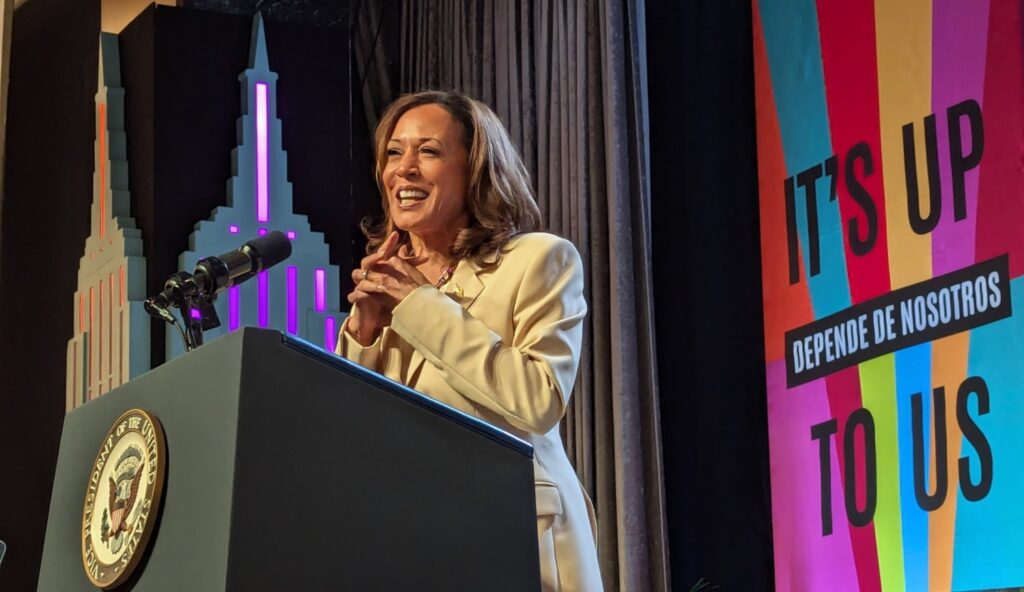The White House hosts a convening on transforming child welfare and announces new policy to prevent family separation due to poverty

The President and Vice President believe every child should have the opportunity to reach their full potential and grow up in a safe and loving home with their families. Over four million families are referred to child protective services each year, and around 200,000 children enter foster care. Child welfare systems are prepared to step in when a child’s safety is at risk, but they are frequently tasked with intervening when families are simply impoverished and could be best helped in the long run by helping meet their economic and service needs. Since Day One, the Biden-Harris Administration has been committed to improving child and family well-being by keeping families together safely, including through helping connect them to community and economic supports, increasing the use of kinship care, and improving foster care so that when it is needed, it preserves and strengthens lasting emotional bonds.
Today, the White House hosted a convening on transforming child welfare to announce new policies that focus on preventing family separation and supporting and creating opportunities for families and youth. The convening brought together policymakers across federal, state, local, and tribal governments, philanthropy, child welfare and family support organizations, and young people and families who have personal experiences, to encourage further innovation, build new partnerships, and exchange best practices. The new announcements focus on four key areas:
Separating Poverty and Neglect
Children should not be separated from their families due to financial hardship alone. Several states, like Kentucky, Indiana, South Carolina, Wisconsin, Pennsylvania, Washington, and Kansas have already clarified that poverty alone should not cause child removal. And there is emerging evidence connecting these actions to improvements in family outcomes. The Biden-Harris Administration is encouraging states to follow their lead and make clear the distinctions between child maltreatment and financial hardship. Today, the Department of Health and Human Services (HHS) is:
- Issuing new policy guidance that encourages states to update their maltreatment definitions under the Child Abuse Prevention and Treatment Act to exclude the inability to provide adequate housing, child care and other material needs if the family has insufficient financial means to do so from the definition of child neglect. The state should first seek to help the family.
- Committing to develop guidance on training mandated reporters so that they recognize the need to connect economically fragile families to supports and know these changes to neglect definitions.
Prevention Services
Prevention services, including services to help families economically and provide parenting and behavioral health treatment, need to be well resourced, tailored to best meet the needs of families and grounded in evidence. New Biden-Harris actions will expand how states and Tribes can use federal funding for prevention activities to provide greater assistance to children and families before a crisis point. These actions include new policies to:
- Provide more flexibility to Tribal governments to use Tribally accepted prevention services when they collaborate with state child welfare agencies.
- Permit federal administrative funding to help families get to and engage with prevention programs, such as case management, peer navigation and transportation to help families engage with services. Policy will also clarify how federal funds can support evaluations of interventions and activities that improve service implementation.
- As well as, forthcoming new guidance on ways to integrate and leverage the Temporary Assistance for Needy Families program to prevent involvement in the child welfare system.
Prioritizing Kin and Youth Needs
Children who cannot be with their parents but live with relatives and other kin have better outcomes than those who are not, including in stability, behavioral health, and education. New Biden-Harris actions will incentivize jurisdictions to do more to ensure children can live with kin, and meet youth needs by:
- Allowing child welfare agencies to draw on federal funds to finance background check operations to facilitate quicker licensing for kin and others who provide foster care.
- Rolling out a new website spotlights states and Tribes that have adopted new kinship licensing rules, as well as data on their kinship placement rates.
- Publishing a resource guide on federal programs that provide supports to grandparents and kin in their caregiving roles.
- Conducting a series of listening sessions to identify federal flexibilities needed for states and Tribes to adopt kinship licensing rules and kinship first approaches.
Innovations and Research
The Biden-Harris Administration is committed to further developing actionable research on the intersection between prevention, family support and child well-being outcomes. HHS announced several projects that:
- Highlight innovative prevention approaches that rely on service integration and agency collaboration to prevent homelessness among youth aging out of foster care and to build family resilience.
- Enable researchers to study linked Medicaid and child welfare data to understand the health needs of children and parents involved in child welfare.
- Examine the characteristics and experiences of certain families who relinquished or voluntarily placed their children in child welfare custody to better identify the needs for community-based behavioral health and disability services.
THE BIDEN-HARRIS RECORD ON CHILD WELFARE
The Biden-Harris Administration has a long record of actions consistent with its commitment to keeping families together safely, providing supports as an alternative to child removals, and increasing the use of kinship care and other foster care best practices:
- Accelerating uptake of the Title IV-E Prevention Program. This groundbreaking program provides open-ended funding for proven approaches to keeping children with their families. This Administration has approved 38 prevention plans, bringing the total to 42 states, the District of Columbia, and four Tribes.
- Expanding evidenced-based services to use in the Prevention Program. This month HHS announced changes to the title IV-E Prevention Services Clearinghouse review procedures that will enable the review and approval of diverse new programs that can be funded through the Prevention Program, beyond the 85 already approved. These changes clarify how services that include economic supports can be reviewed, offer more flexible evaluation designs to meet evidence standards, and create more engagement and transparency in the review process.
- Respecting Tribal sovereignty. The Administration expanded the scope of Public Law 102-477 plans, which now deliver over $300 million in flexible funding to 298 Indian Tribes to strengthen the economic stability and mobility of families in Indian Country – including by braiding child welfare funding with workforce funding to help preserve families. And just over a year ago, the President celebrated the Supreme Court’s decision in Haaland v. Brackeen, which upheld the Indian Child Welfare Act as a necessary safeguard to ensure that whenever possible, children should be kept with their extended families or community.
- Expanding home visiting. The Administration has doubled total authorized funding for home visits from $400 million in FY 2022 to $800 million by FY 2027 in the Maternal, Infant, and Early Childhood Home Visiting Program and quadrupled funding to $48 million to Tribes over the same period, increasing efforts that can identify challenges facing families and enable solutions that keep children healthy and families together. Most recently, HHS announced $3 million in grant funding to six new tribal entities for a home visiting programs to support and promote the well-being of expectant families and those with young children in Indigenous communities.
- Prioritizing kinship care. In September 2023, HHS issued a final rule that allows a child welfare agency to adopt simpler licensing or approval standards for all kin foster family homes. The rule also requires that states provide kinship caregivers with the same level of financial assistance that any other foster care provider receives, an important step forward to strengthen the financial security of kinship families. In April 2024, HHS hosted a national convening on kinship care to highlight innovative strategies to bolster kinship care. Six states and three Tribes have taken up the kinship licensing rules in the first six months, and three more are pending approvals to do so.
- Supporting young people in foster care. HUD has increased public housing authority uptake of the Foster Youth to Independence Program, which provides housing vouchers for up to three years for older youth transitioning from foster care. Since the beginning of the Biden-Harris Administration, HUD awarded $60.3 million, providing 4,364 vouchers for older youth. HHS also funded 11 state and Tribal demonstration grants to test community approaches to prevent youth from becoming homeless. And USDA and HHS are working to ensure that young people experiencing homelessness or transitioning out of foster care can keep their SNAP benefits without work reporting requirements, as secured by the President through the Fiscal Responsibility Act of 2023.
- Protecting parents and children with disabilities from discrimination. HHS issued a final rule to protect parents and children with disabilities involved with the child welfare system. The final rule seeks to ensure that children with disabilities are served in the most integrated setting appropriate to their needs, and that parents and prospective parents do not face discrimination in visitation, reunification, child placement, and other child welfare services based on stereotypes about their disability.
- Cutting child poverty. The Biden-Harris Administration saved nearly 40 million working families with 65 million children an average of $2,600 by expanding the Child Tax Credit in 2021—helping to cut child poverty nearly in half, lifting 1.2 million Hispanic children, 800,000 Black children, and almost 100,000 Asian American children out of poverty.
- Providing affordable child care for families. The President has secured nearly a 50% increase in child care funding, keeping providers open during the pandemic and bolstering women’s labor force participation. HHS made changes to the child care subsidy program to lower costs for families with low-incomes by capping their out of pocket child care costs to 7% of their income.
- Providing housing relief for families. The Biden-Harris Administration has provided rental assistance to more than 5 million households, including an additional 100,000 low-income families. The Administration established a ceiling for annual rent increases for the two million apartments that are financed by federal tax credits—reducing the maximum allowable annual rent increase for those renters by an average of nearly $500 this year. And during the pandemic, the Administration provided rental assistance to 8 million renters to help pay rent, keep them in their homes, and cover utilities bills.



